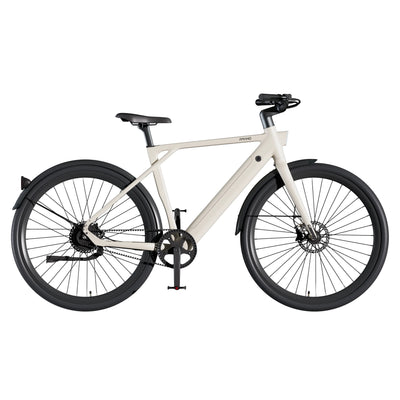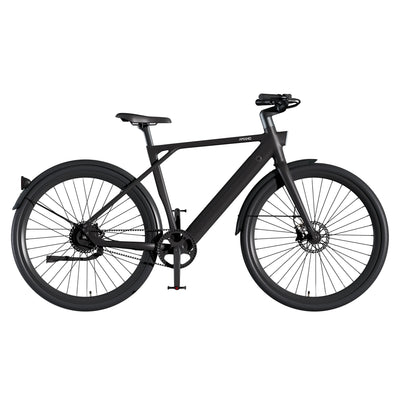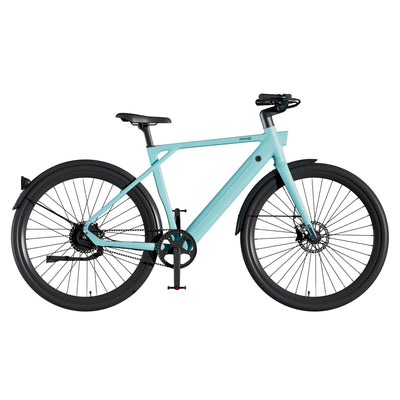When Do E-Bike Batteries Deteriorate & How to Protect Them
- par OuEthan
- 0 commentaire

E-bike batteries degrade over time and with use. You might wonder when this deterioration starts and what factors speed it up. With frequent use, e-bike batteries typically begin to deteriorate after 2 to 5 years—though this depends on the battery’s quality and how well you care for it. Most batteries lose noticeable capacity after 500 to 1000 charge cycles.
This degradation speeds up due to improper charging or exposure to extremely high temperatures. The good news? You can slow down battery aging with proper maintenance and careful charging habits. In this post, we’ll break down the factors that cause battery deterioration and share practical ways to extend your e-bike battery’s lifespan.
How Long Does an E-Bike Battery Last?
A standard e-bike battery lasts 3 to 5 years on average, and sometimes longer—this depends entirely on how you use and maintain it. Under normal use, batteries lose about 3–5% of their capacity each year.
Rapid deterioration happens when the battery is exposed to heat or left fully charged for long periods. Even unused batteries wear out slowly over time. To get the most out of your battery, always charge it partially (instead of letting it die completely) and never leave it in harsh temperatures.
Signs of Battery Deterioration
How do you know if your e-bike battery is starting to degrade? Watch for these key signs:
-
Reduced Range Per Charge: If your e-bike travels shorter distances even after a full charge, this is a clear red flag. The battery’s internal cells weaken over time, storing less energy—and this leads to lower efficiency and shorter rides.
-
Longer Charging Times: A healthy battery charges at a steady, consistent rate. If charging takes significantly longer than usual, the battery’s internal resistance has likely increased. This slows down energy transfer and is a sure sign of aging cells.
-
Decreased Performance Under Load: You’ll feel less power when climbing hills or accelerating. This means the battery can’t maintain voltage during high-demand situations—its internal chemistry has weakened, limiting energy flow.
Causes of E-Bike Battery Deterioration
Several factors accelerate e-bike battery degradation. Here are the most common ones:
-
Overcharging: Leaving your e-bike plugged in after it’s fully charged strains the battery’s cells. Constant high voltage leads to heat buildup and chemical reactions that wear down the battery over time, shortening its lifespan.
-
Extreme Temperatures: Both intense heat and freezing cold damage the battery’s internal chemistry. High temperatures speed up degradation, while low temperatures temporarily reduce performance. Always charge and store your battery in moderate temperatures.
-
Heavy Load or Frequent Hill Riding: Using your e-bike under heavy loads—like steep hills or carrying extra weight—forces the battery to supply more energy. This constant strain accelerates degradation. You can ease this by managing your load, using the right gears, and taking short breaks between rides.
-
Poor Maintenance Habits: Skipping regular care speeds up battery wear. Neglecting to clean the battery, storing it incorrectly, or ignoring charge levels all hurt its overall performance. Keep terminals clean, store the battery partially charged, and recharge it regularly.
When to Replace Your E-Bike Battery
It’s time to replace your e-bike battery when it shows significant performance issues. The most obvious signs include:-
A major drop in range (even after a full charge)
-
Much longer charging times than normal
-
Failure to charge fully
-
Visible damage (like swelling) or unstable power supply
Replacing the battery on time ensures safety, keeps your e-bike efficient, and prevents unexpected breakdowns during rides.
Tips to Extend Your E-Bike Battery Life
With simple, smart habits, you can significantly extend your e-bike battery’s lifespan. Here’s how:-
Routine Charging: Recharge your battery regularly instead of waiting for it to die completely. Partial charges avoid straining the cells. Never overcharge—unplug it as soon as it’s full to maintain long-term performance.
-
Optimal Storage Conditions: Always store your battery in a cool, dry place. Avoid exposure to extreme heat or frost, as these speed up wear. For long-term storage, keep the battery partially charged (not empty or full) to protect its cells.
-
Regular Maintenance Checks: Inspect the battery’s connections, wires, and terminals regularly. Wipe away dirt or rust to ensure maximum energy output. Frequent small checks keep the battery healthy and prevent unexpected failures.














